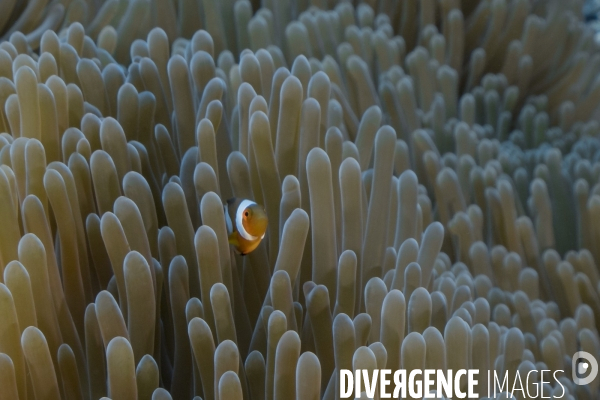
Poisson clown à trois bandes Amphiprion ocellaris
© Alexis ROSENFELD / Divergence
Province de Palawan - Philippines. Au coeur de la mer de Sulu, aux Philippines, les récifs de Tubbataha ont été placés en réserve marine en 1988. En 1993, l'UNESCO en a fait un de ses sites classés au Patrimoine Mondial. Tubbataha est un des hauts lieux de la plongée aux Philippines et dans le monde, même si ces récifs ne sont ouverts aux plongeurs que durant quelques mois dans l'année afin de les préserver au maximum. Au milieu des coraux, on trouve parfois une anémone habité par des poissons clown. Ici un poisson clown à trois bandes, Amphiprion ocellaris.
Lieu : TUBBATAHA REEFS, PHILIPPINES
Mots clés : AIRE MARINE PROTEGEE, AMPHIPRION OCELLARIS, ANEMONE, ANIMAL, ANIMAL MARIN, BIODIVERSITE, CNIDAIRE, ENVIRONNEMENT, ENVIRONNEMENT MARIN, MER, MER DE SULU, NATURE, PALAWAN, PATRIMOINE MONDIAL, PHILIPPINES, PHOTO SOUS-MARINE, PHOTO SUBAQUATIQUE, POISSON, POISSON CLOWN, RESERVE MARINE, SOUS L'EAU, TENTACULE, TRIANGLE DE CORAIL, TUBBATAHA REEFS, TUBBATAHA REEFS NATURAL PARK, UNESCO, VIE MARINE